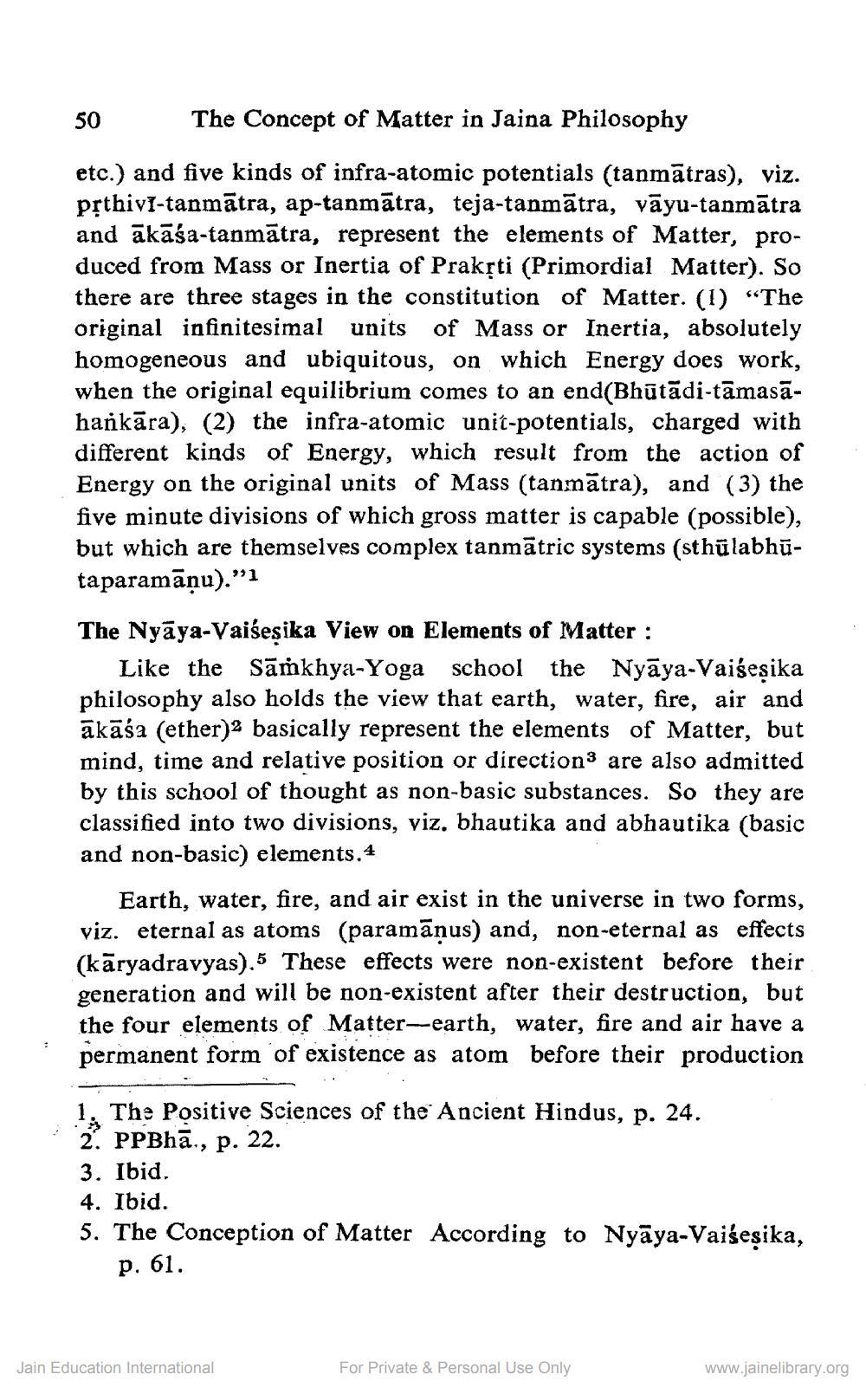________________
50
The Concept of Matter in Jaina Philosophy
etc.) and five kinds of infra-atomic potentials (tanmātras), viz. přthivi-tanmātra, ap-tanmātra, teja-tanmātra, vāyu-tanmātra and ākāśa-tanmātra, represent the elements of Matter, produced from Mass or Inertia of Praksti (Primordial Matter). So there are three stages in the constitution of Matter. (1) “The original infinitesimal units of Mass or Inertia, absolutely homogeneous and ubiquitous, on which Energy does work, when the original equilibrium comes to an end(Bhūtādi-tāmasāhankāra), (2) the infra-atomic unit-potentials, charged with different kinds of Energy, which result from the action of Energy on the original units of Mass (tanmātra), and (3) the five minute divisions of which gross matter is capable (possible), but which are themselves complex tanmātric systems (sthūlabhūtaparamāņu)."1 The Nyāya-Vaiśesika View on Elements of Matter :
Like the Sāṁkhya-Yoga school the Nyāya-Vaiseşika philosophy also holds the view that earth, water, fire, air and ākāśa (ether)2 basically represent the elements of Matter, but mind, time and relative position or directions are also admitted by this school of thought as non-basic substances. So they are classified into two divisions, viz. bhautika and abhautika (basic and non-basic) elements.4
Earth, water, fire, and air exist in the universe in two forms, viz. eternal as atoms (paramānus) and, non-eternal as effects (kāryadravyas).5 These effects were non-existent before their generation and will be non-existent after their destruction, but the four elements of Matter--earth, water, fire and air have a permanent form of existence as atom before their production
1. The Positive Sciences of the Ancient Hindus, p. 24. 2. PPBhā., p. 22. 3. Ibid. 4. Ibid. 5. The Conception of Matter According to Nyāya-Vaiseșika,
p. 61.
Jain Education International
For Private & Personal Use Only
www.jainelibrary.org




